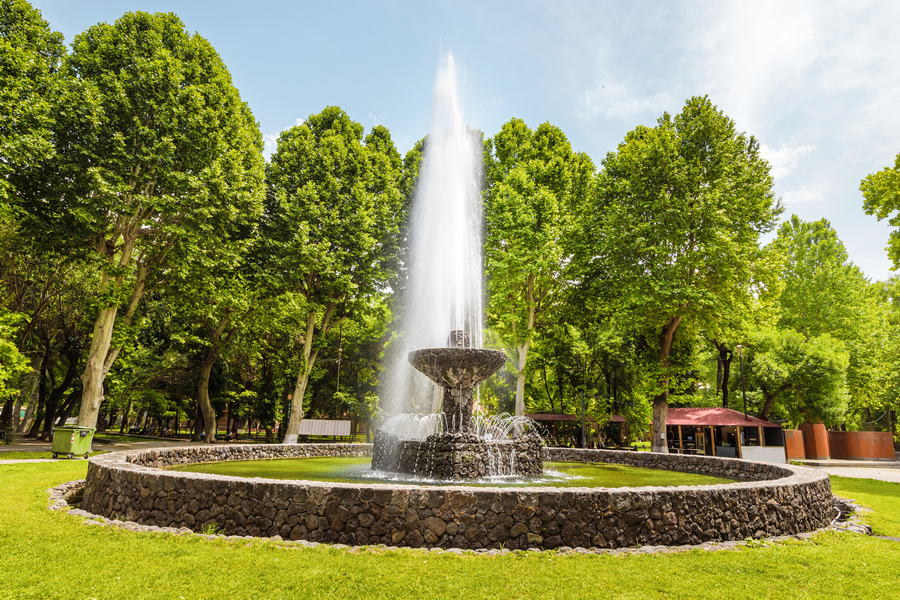
English park is the oldest one in Yerevan. It is an ideal place for relaxation, where one can escape the bustle city life of the city. Starting from the early 19th century, the surrounding area of the park was considered the most fashionable one in the city, occupied by expensive shops, hotels, and restaurants. It was the heart of the social life of the city, and the overall atmosphere was reminiscent of old London. Due to this, the founder of the park, the head of the Erivan province, Mikhail Astafiev gave it the name English Park.
The park was founded in the 1860s. From year to year, it became more and more isolated and was left without much attention even though it was surrounded by the luxurious atmosphere of the Armenian capital. The well-known Armenian doctor Levon Tigranyan repeatedly appealed to the City Council to draw attention to the problems of the city's largest park. However, all his requests were rejected repeatedly.
The city authorities began to think about the reconstruction of the park only in 1894.
A detailed plan of action was drawn up, that included the process of draining wetlands, paving alleys, and planting trees and shrubs. This task was entrusted to the local businessman Levon Baklachyan, who leased the territory for 12 years. According to the contract, during the first three years, he had to implement all the ideas outlined by the city authorities. Unfortunately, Baklachyan did not follow the assigned tasks. The head of Yerevan, Isaak Melik-Agamalyan, decided to take up the reconstruction works. In 1910, the renovated English Park was reopened to visitors.
During the Soviet times, a pantheon of fallen revolutionaries was built in the park. The name was changed to the park of 26 Baku Commissars and was kept before the decline of the Union.
In 1938, the National Academic Theatre was opened here as well. The first football match in Armenia took place in the park in 1920.
Park Today
At the beginning of the 21st century, a new street, named after Italy, was laid in the middle of the park, dividing it into two parts. On one side of the park, there are various modern buildings, including the embassies of Italy and France. The lovers of Soviet architecture will appreciate the strict and monumental style of the theater building.
During the summertime, the park is full of colors, joy, and vividness.
A monument to Pepo, the fictional character of the play of the same name by Gabriel Sundukyan, was also erected in the park. The main theme of the play is the following: Pepo is an honest fisherman, trying to return his father's money, that was lent to the rich merchant. However, the corrupted judge is in cahoots with the merchant and, having replaced the original receipt with a fake one, accuses Pepo of forgery. Pepo personifies the image of a simple and honest person who loves his work and knows how to sing it. It is a symbol of the struggle against the exploitative regime that reigned in Yerevan in the second half of the 19th century.
Nearby you will also find a huge bust of Gabriel Sundukyan himself.
In the northwestern part of the park, behind Italy Street, there is a cascade of fountains, creating a cozy ambiance. It is an excellent location for photoshoots.

